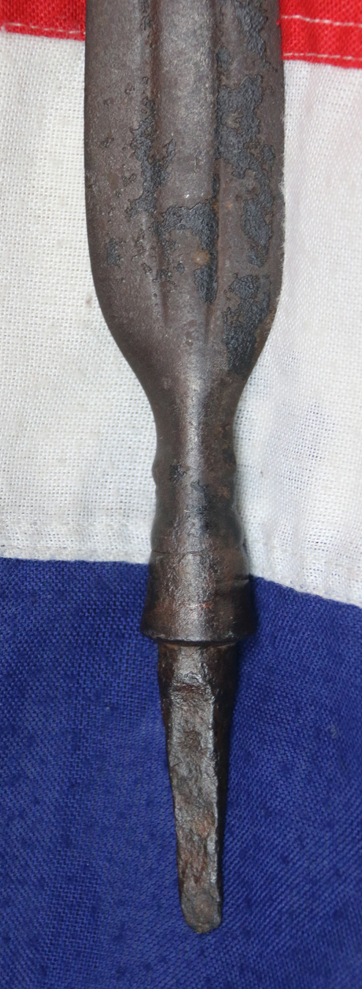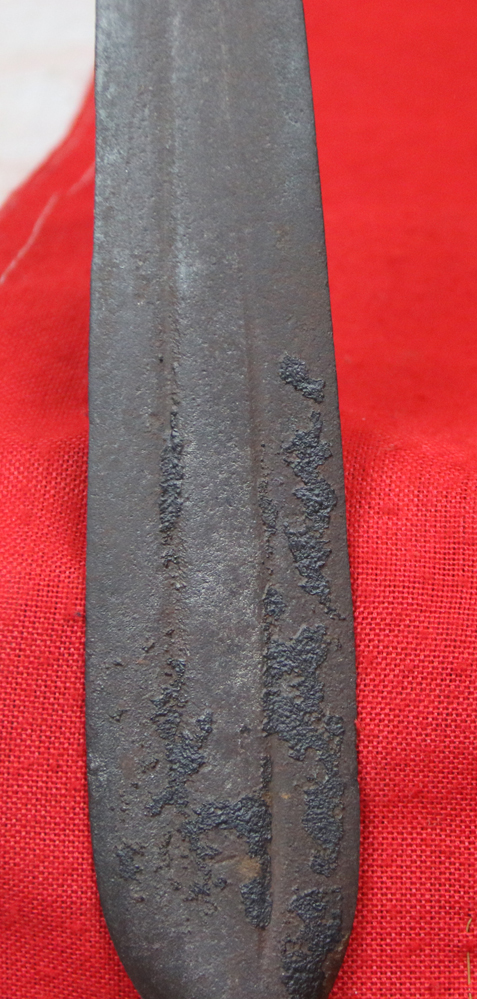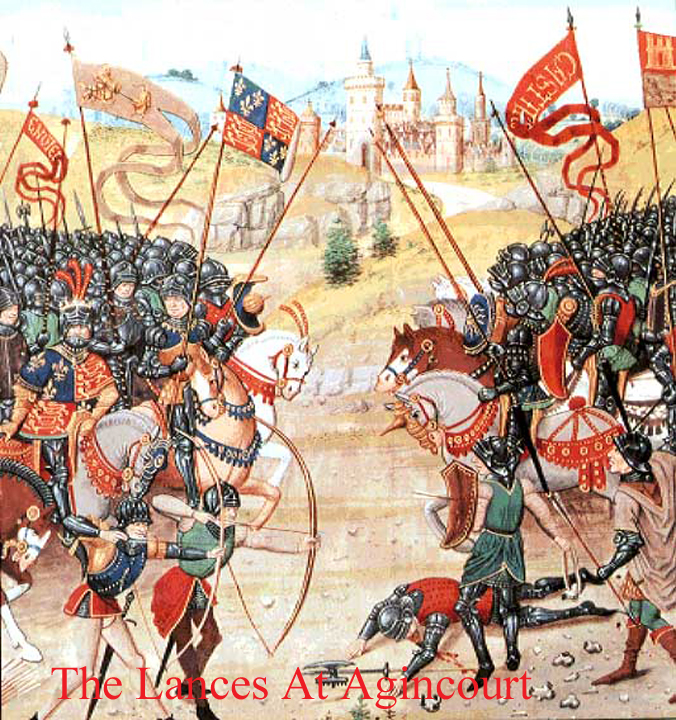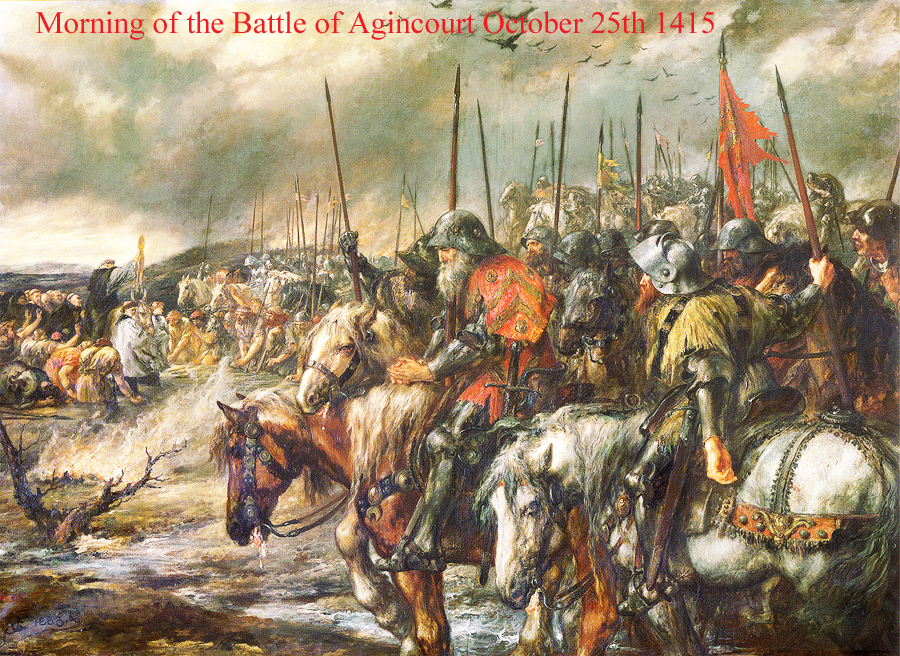A Superb, Original, 15th Century Tanged Lance Head From the Battle Of Agincourt of 1415 . Acquired in the 1820's at a ‘Grand Tour’ Battle Site
We were most delighted to have acquired a stunning collection of ancient bronze age weaponry, Medieval weaponry and a few other artefacts, including this stunning, and rare, steel pole-arm. Items such as this were oft acquired in the 18th century by touring famous battle sites in Northern France, Italy and the Ottoman Empire on their 1820’s Grand Tour. Originally placed on display in the family 'cabinet of curiosities', within their family estate country home upon their return to Britain. A popular pastime in the 18th and 19th century, comprised of English ladies and gentlemen traveling for many months, or even years, througout classical Europe and the Middle East, acquiring antiquities and antiques from ancient battle sites, such as the French sites at Agincourt, Crecy and Poitiers, for their private collections at home. One such family’s descendants have been allowing us to purchase such wonderful pieces from their family collection for around the past 30 years. These pole-arms were used at Agincourt by both English and French knights on horseback as a lance, and by the English and French men-at-arms on foot as a pole-arm or pike. However the French men at arms shortened their original long woodened hafts further which gave them a huge disadvantage in the battle's melee against the longer reach of the English. In superb condition for age, and a very fine quality piece, much superior than a regular lance or spearhead of the time. Armour-protected knights charged on horseback wielding lances ten to eleven feet long (cut down to as short as five feet by both the French and English at the Battle of Agincourt). The age ended with the rise of the bowmen in the fourteenth century. While the devastating volleys of English longbow men had initiated the change at Crecy on August 26, 1346, it was massed bodies of pikemen that really thwarted cavalry charges, as they did at the Battle of Pavia in 1525. Large quantities of lances would also have been used at Agincourt by men-at-arms. The small mounted French force at the battle tasked with driving off the English archers would have been equipped with this weapon. The vast majority of the French men-at-arms, and all of the English, were dismounted but still used lances at Agincourt. The English had an advantage over the French at the battle however, because the latter had decided to shorten their lances to give them greater control over their weapons prior to the battle. This proved to be a mistake during the melee as the longer English lances meant that they had a greater reach and were able to push over the French. One account of the lance used at Agincourt involved an assault on King Henry himself." under the banner of the Lord of Croy, eighteen gentlemen banded themselves together of their own choice, and swore that when the two parties should come to meet they would strive with all their might to get so near the King of England that they would beat down the crown from his head, or they would die, as they did; but before this they got so near the said King that one of them with the lance which he held struck him such a blow on his helmet that he knocked off one of the ornaments of his crown. But not long afterwards it only remained that the eighteen gentlemen were all dead and cut to pieces; which was a great pity; for if every one of the French had been willing thus to exert himself, it is to be believed that their affairs would have gone better on this day. And the leaders of these gentlemen were Louvelet de Massinguehem and Garnot de Bornouille" King Henry V of England led his troops into battle and participated in hand-to-hand fighting. The French king of the time, Charles VI, did not command the French army himself, as he suffered from severe psychotic illnesses with moderate mental incapacitation. Instead, the French were commanded by Constable Charles d'Albret and various prominent French noblemen of the Armagnac party.
This battle is notable for the use of the English longbow in very large numbers, with the English and Welsh archers forming up to 80 percent of Henry's army. The decimation of the French cavalry at their hands is regarded as an indicator of the decline of cavalry and the beginning of the dominance of ranged weapons on the battlefield.
Agincourt is one of England's most celebrated victories. The battle is the centrepiece of the play Henry V by Shakespeare. Juliet Barker in her book Agincourt: The King, the Campaign, the Battle ( published in 2005) argues the English and Welsh were outnumbered "at least four to one and possibly as much as six to one". She suggests figures of about 6,000 for the English and 36,000 for the French, based on the Gesta Henrici's figures of 5,000 archers and 900 men-at-arms for the English, and Jean de Wavrin's statement "that the French were six times more numerous than the English". The 2009 Encyclop?dia Britannica uses the figures of about 6,000 for the English and 20,000 to 30,000 for the French. Overall 20.5 inches long in very sound and nice condition for age. There are very few such surviving lances from this era, and just a few are part of the Royal Collection. As with all our items it comes complete with our certificate of authenticity. Almost every iron weapon that has survived today from this era is now in a russeted condition, however this one, is relatively lightly russeted. Usually only the swords of kings, that have been preserved in national or Royal collections are today still in a reasonable state and condition. The wooden hafts simply never survive from being lost in the ground for so many centuries
Code: 23022
1750.00 GBP







